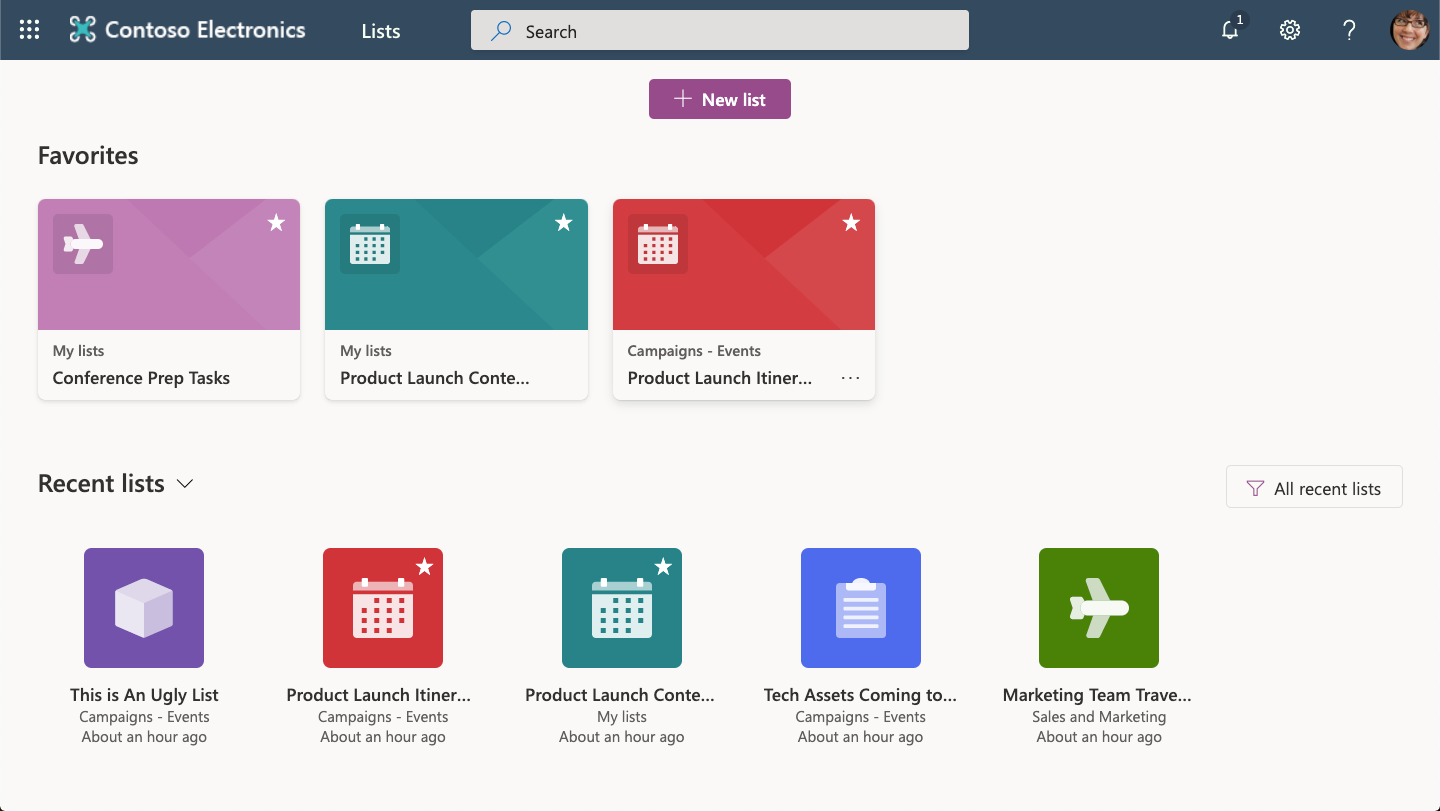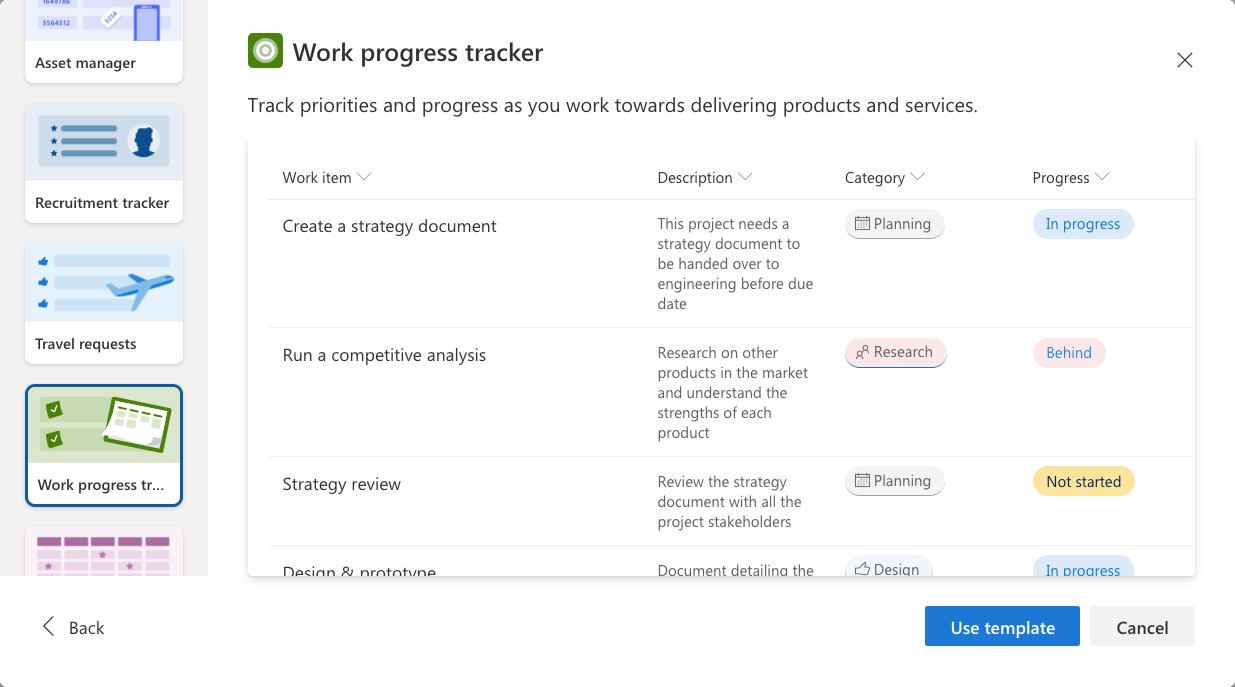Welcome to a brand new list experience in Office 365
First, a little background: Microsoft Lists was announced as the newest app-to-be for Office 365 and I have to say, after doing some playing and testing, it’s a fantastic experience for managing lists and tasks. Now, Lists is marketed as a new app in Office 365, but in reality it’s simply a rebranding and major update to the humble SharePoint list.
Lists provides a truly modern experience for SharePoint lists—much more modern than the earlier modern experience that rolled out with SharePoint Online a few years ago—and helps Lists compete with tracking and tasking apps like Wrike, Asana, and other tools that manage item listings. Here's a quick marketing video covering lists:
Now, could you say this is Microsoft trying to keep its users from going off and purchasing licenses to those apps? Maybe. But it’s also Microsoft making sure you have a similar feature set and user experience within Office 365 itself, safe, secure, and under one umbrella. Also at no added cost.
Before you go on, here's a video version of this blog post if you prefer it.
Accessing Microsoft Lists
Microsoft Lists is currently only available to targeted release Office 365 users. If you're not familiar with that term, it's basically a sneak-peek setting that someone on your IT team can enable for you. Reach out to your IT team and ask; can't hurt. Microsoft indicated on August 21 that Lists was 50% rolled out to all targeted release users with completion expected by August 31. After that, Lists will roll out to all users with an expected completion timeframe of September 2020.
Even if you're a targeted release user, you might not be seeing Lists in your app launcher. There are a few workarounds to this:
- Access your OneDrive for Business and replace /onedrive.aspx at the end of the URL with /lists.aspx
- Access a site in SharePoint Online and add this to the end of the homepage's URL: /_layouts/15/lists.aspx
- If you have a SharePoint list open, click Expand on the right side of the list
Eventually you should see Lists in the waffle on the Office.com homepage.
Lists Home
Lists basically centralizes the list experience in the way that the SharePoint home brings all of your favorite and recent sites into one page. The page designs are extremely similar, actually. You’ll see a list of your recent and favorite Lists displayed prominently. The view is unique and personal to you.

Now, to create a list, you’re going to jump into Lists from your Office 365 waffle and from there you’re in what’s called the Lists home. Lists actually continue to live in SharePoint for site-based lists and—new to this experience—OneDrive for Business for personal lists you create. The new Lists home simply brings everything together.
Incidentally, this makes the roadmap items associated with Lists much less confusing—at least to me. The original roadmap item wasn’t “Launch of Microsoft Lists”, but “Launch of Microsoft Lists home”. Well, we now know why: the concept of a list isn’t new. The new, prettier user experience would have rolled out as an upgrade regardless. Lists Home is what’s actually new.
Creating and editing a list
As you create your first List, you’ll notice that Microsoft provided a bunch of templates. Each template has somewhat standard columns that you won’t have to create as part of your List, which is pretty nice. In the preview, the Lists are pre-populated, but that content doesn’t come over when you create a List.

The other major thing not to miss is where to save your List. A List can be saved to any SharePoint site where you have member access or you can save it as a personal List, which stores it to your OneDrive for Business.

Your new list pops up in a full-screen mode, which can make editing easier. If you look at the URL for your list, you’ll see exactly where it’s stored. Note the web list view code at the end of the URL. That’s what makes it full-screen.
Add your list items as you see if until you’re happy. You’ll notice the standard SharePoint list toolbar that lets you add an individual item, quick edit, and bring in the Power Platform if you want. Personally, I’ve always been a fan of alerts, which I see is still retained.
Add a List to SharePoint or Teams
Once you’ve populated your list, you’ll be able to view it in its site. Go to the site’s homepage and you should see the list in the quick launch. You can also add it to a SharePoint page as a list web part. It looks really slick if you ask me.
Another big win for Lists is its integration with Microsoft Teams. You can add a list as a tab to your Team channel so you have quick access to all the same information, whether you’re using Lists, SharePoint, or Teams.

Managing your Lists
Managing a list is the same experience it always has been. I’m not going to deep dive too much into managing the list. I will say a modern sprucing up of the List Settings experience would be welcome, but maybe that’s incoming.
My thoughts
Lists is a great UI update to an area of SharePoint that hasn’t gotten nearly as much love as the files experience has in the past few years. And that’s sort of justified when you think about it. SharePoint is the file handler for Microsoft Teams and Teams has seen exponential growth—especially as a result of so many new workers from home during the covid pandemic—and the priority has been on making Teams as useful and intuitive as possible.
The new UI plus the templates—in my opinion—really constitute List’s main selling points. If you look at the major competitors in the field for tracking, task, and list management—again, look to monday.com, Asana, Wrike—Microsoft Lists finally is jabbing at their pleasant, clean, and modern UIs in a way it couldn’t before. But if you have spent any time building SharePoint lists, you’d know you have the power to create, well, almost anything you could want. Those apps can’t really do that and SharePoint always could. So the upgrade here is more about happy end users than functionality. And that has a lot of value.
One drawback I’ve noticed is you can still create lists in a SharePoint site and it won’t come through under the new UI. I’m not sure if that’s something that’ll get updated when Lists is released to the masses. It could definitely lead to confusion.
Another drawback is actually one of the major discussion points I’ve heard since Lists was announced: a better way to track tasks. Well, Lists may have templates called “work progress tracker” and “issue tracker”, but these aren’t task lists. In fact, the old-school SharePoint task list is still much more feature-rich.
And that’s one thing that will leave you wanting in what is really an effort to compete with Wrike and Asana: Lists doesn’t really do tasks. I mean, it can. You can absolutely create a list of tasks and assign them to people, provide due dates, start dates, priority, and the like. But you’re not going to see a connection to any of the Microsoft task apps like To Do, Planner, or Tasks in Teams. And you’re not going to see any sort of Gantt chart associated with it. There’s actually an FAQ from Microsoft covering this topic:
Microsoft Lists is an information tracking app that enables teams and organizations to manage a process or workflow. While To Do and Planner are purpose-built apps, specifically designed to help individuals and teams manage their work using tasks. Commonly, when a task is completed, it becomes hidden from view. Microsoft Lists, on the other hand, enables users to collect, view, filter, sort, collaborate, and share structured information across status, life cycle, ownership, and more. Lists integrate with the Power Platform to design, build, and extend productivity apps alongside Power Apps (custom forms) and Power Automate (custom flows). Learn more about Microsoft Lists, and learn more about To Do and Planner.
So that pretty much says do tasks in your tasks app, do lists in your lists app. Actually, if you’re interested in an overview on when to use which of these apps—Lists, To Do, Planner, or Tasks in Teams—I’m curious to know the interest level. Leave a comment and maybe I’ll do that next.
But minus the tasks aspect, the upgrade to Lists finally gives me ammo when people ask me whether they should invest in some of these other list and tracking apps. I’d say, not so fast, you’ve got a perfectly capable, user friendly, FREE app built right into Office 365 that you should check out first.
Wrap up
You can try Lists for yourself right now if your Office 365 tenant is set to targeted release. It should roll out to all users by the end of August 2020. If you take a look at the Microsoft 365 Roadmap, you’ll see there are a bunch of Lists-related updates coming. That includes a mobile app that will bring Lists to your pocket the way the SharePoint app did for your intranet.
Try out Lists for yourself and let me know what you think by commenting below. Will you be using the upgraded Lists experience any time soon? Anything I missed? Would love to hear it. Happy listing!
Learn more about Lists from Seth Patton's announcement blog and check out this deeper dive intro video from the Lists team.





Obviously you have an opinion, so share it!